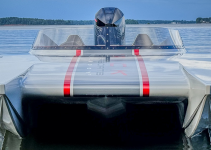Back in the early 1980s Redline introduced the 401-series tubular chromoly Flight cranks, and over forty years later their basic design remains virtually unchanged. They were the cream of the crop for BMX racers and freestyle riders, offering the strength of single-piece cranks without the weight penalty associated with them. The downside was that they cost nearly as much as a decent bicycle. That’s where the Flight 400-series cranks came into being.
The tubular chromoly design of the Flight 400 cranks represented a sharp departure from the heavy single piece and weak alloy cranks of the day, finally giving larger BMXers a crank set that they could never break. The Flight cranks were such a good design that even today most BMX crank sets are based off their design, and the modern Redline Flight crank retains most of this original design.
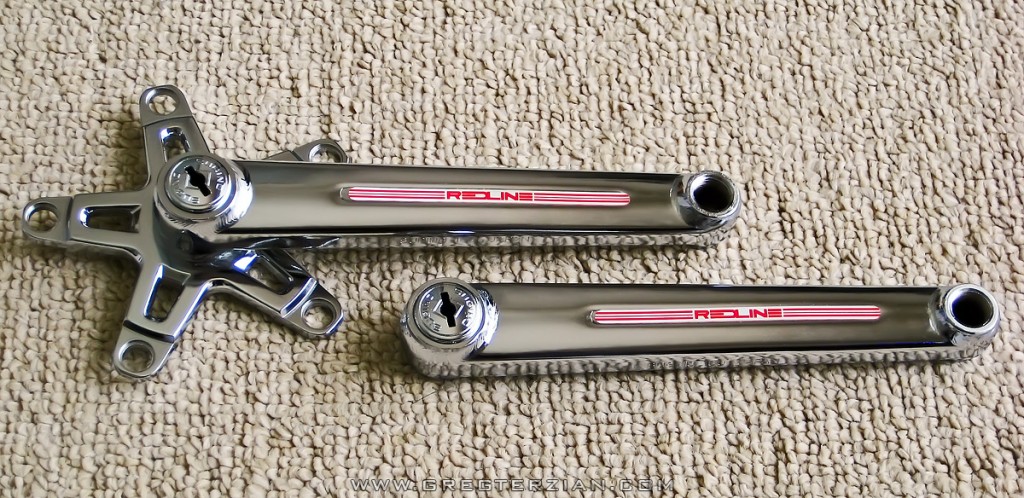
When Redline introduced the Flight crank series, there were actually two crank sets – the 400 and 401 series. Most people will remember the 401 Flights as the quintessential Redline Flight crank with its trademark four-spoke chainwheel – a simple and elegant design that stood out at the time as high tech and expensive. Very expensive. In the early 1980s, the 401 Flight crank set had a street price of $149.95. That may not seem like much today, but at the time most BMX crank sets didn’t cost more than $40.00.
So what were the differences between the 401 Flights and the 400 series? To be blunt, the two have more differences than they have in common. The Redline 401-series Flights are American made tubular chromoly crank arms which use a splined interface and a pinch bolt to secure the arm to the spindle. The 400-series Flights were designed by Redline and manufactured by Sugino in Japan. They are tubular chromoly and share the same fluted arm design as the 401 series, however the 400-series cranks utilize the older (and less reliable) square taper interface to secure the crank arms. The 400 series Flights use a larger spindle size than the Japanese square taper crank interface standard, for adds strength – which was good for the design, but it also means that only a Sugino 400 series spindle will work with these cranks. Finally, the Redline 401 series cranks used a standard 19mm chainwheel or chainwheel adapter with a single fixing bolt, whereas the Sugino 400 drive arm had a 110 BCD five-bolt aluminum spider permanently installed.
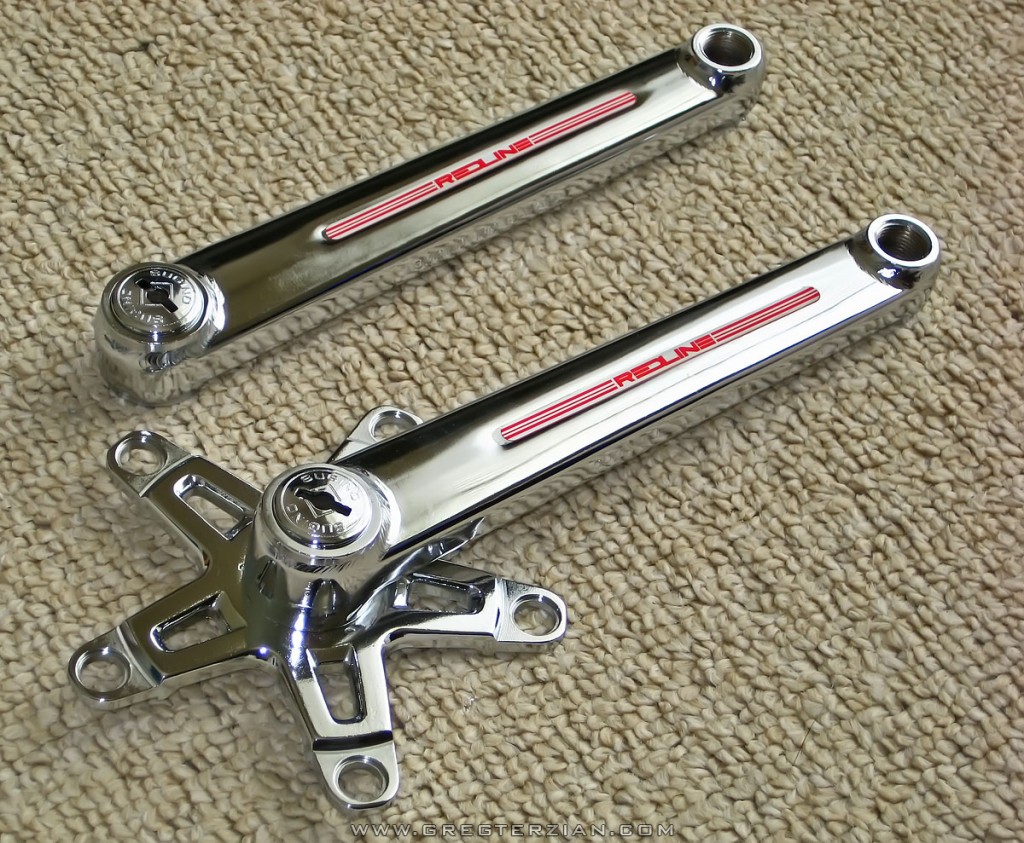
So what does this all mean? Since both crank sets were relatively expensive, most people opted for the Redline 401 series since they were considered the superior product to the 400 series cranks. If someone was prepared to spend $100 or more on a set of BMX cranks, they would be inclined to simply buy the best they could, rather than a ‘lower model’, which the 400s were designed to be. Of course the 401 series Flight cranks were better – they were stronger, allowed more chainwheel options, and permitted chainline adjustments, which the 400 cranks did not. Eventually Redline dropped the 400 series cranks from their product lineup, although Sugino continued to produce them under their own name, as well as for Diamond Back, although those looked much different than the Redline variant. The Sugino-branded “400” cranks looked identical to the Redline units, except that the arms are stamped “Sugino” instead of “Redline”, along with the arm length. It should also be noted that many Redline-branded 400-series Flight cranks were stamped “Sugino”, presumably used when Redline-stamped units were not available during production. Both Redline and Sugino variants are worth the same today on the collector market, which brings me to the point of all of this – the irony of the collector market.
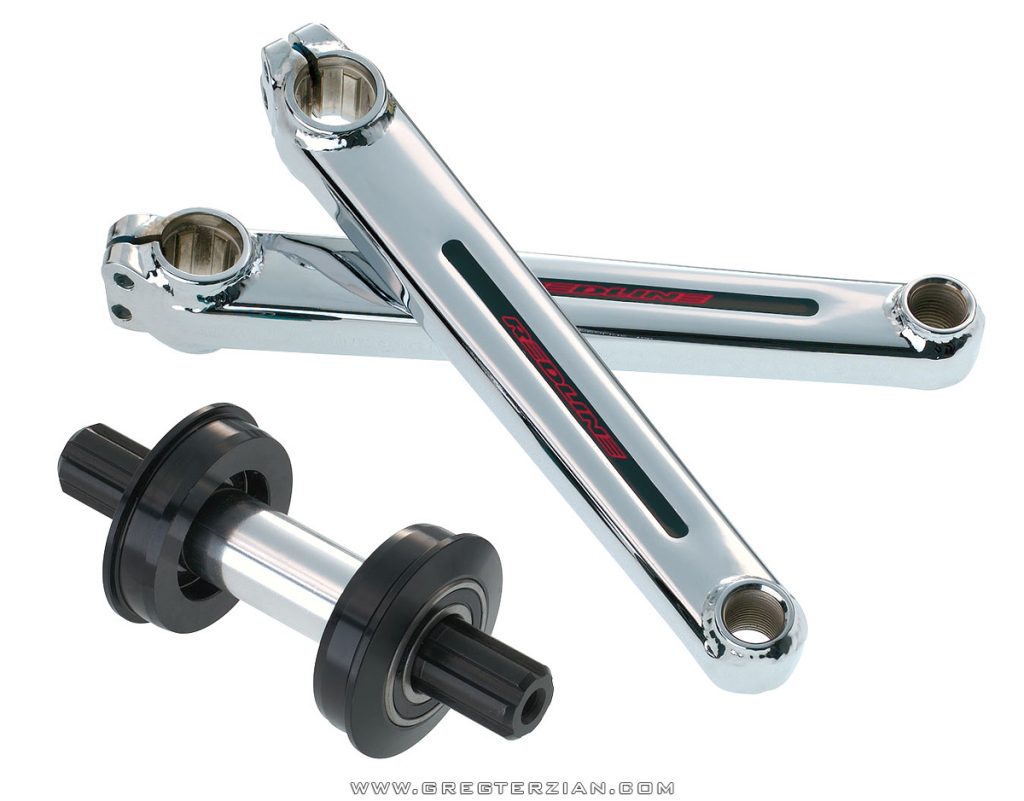
Since the 401 Flights sold far better than the ‘budget’ 400 series Sugino cranks, the latter are now commanding much more money on the collector market. As with anything collectible, previously undesirable items become worth a lot of money years later primarily due to their scarcity. I’ll be honest with you, I think the 400 series Sugino cranks look better too, and I was thrilled when I finally found an NOS set, thanks to BMX Addicts owner, Juan Mattos. To say these cranks are rare would be an understatement, and NOS sets of these cranks are unheard of. This is not to say that 401 Flights are not worth much these days – actually, they command quite a value, although ironically, the Sugino 400s will usually bring more money on the collector market, all variables being equal.
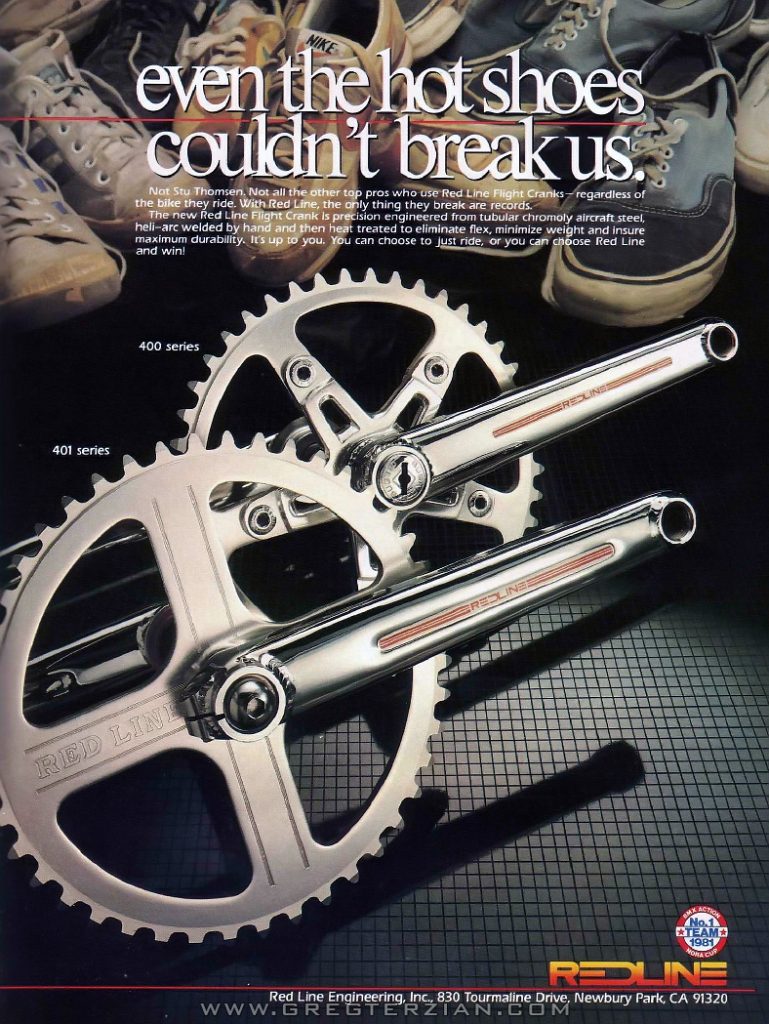
These days when people see a mint set of Redline/Sugino 400 cranks on a show bike, they instantly skip a breath – and adding to the rarity of these cranks is the fact that restoring them is very tough due to the difficulty in re-chroming the drive side arm, with its permanently installed chainring spider. You may be wondering, what are these cranks worth today? A complete set of Redline or Sugino-stamped 400 cranks in good condition will bring between $500-$650, while a complete set of 401 Flights in the same condition would bring about $300-$450. What are the values of these cranks in NOS condition? The early 1980s 401 Flights should bring about $750 or more in NOS condition. As for the 400 series cranks, I could only speculate, since I’ve never seen another NOS set, and no, I’m not going to tell you what I paid for mine. : )


